I need to admit at the onset, the hardest literature for me to judge, to get into, to teach has always been middle grade fiction. I think I have some sort of block – like, I had such a terrible time with middle school I can’t revisit it without experiencing dry heaves. So, when it comes to middle grade fiction, I have to take a step back and NOT trust my initial judgement. Instead, I have to read it, set it aside, and think about the book as it fits within the genre expectations, language and socio-emotional expectations of the readers, the context of school and curricular constraints. When I started reading Wonder, I assumed this familiar reader stance and asked myself these questions;
- How does the craft, dialogue, language, rhythm hit?
- What is the genre and form? Is that done well and with clarity?
- Which characters drive the plot and are changed as a result of the plot?
In this case, I have been reading and rereading Wonder by R.J. Palacio since 2012. The book has won multiple awards, had a movie adaptation starring Julia Roberts, and spawned a series of follow-up books. Ten years after publication and it is still being used as school wide reads and is solidly embedded in the middle school literary cannon.
If you have been living under a rock and have missed the book … I will provide a brief synopsis:
The novel follows one school year in the life of a boy with massive cranial deformities. The book is written from multiple points of views, including the boy, his parents, sister, and peers. The boy’s voice is consistent, strong, patient, and extremely mature. In fact he is a saintly character – his motivations are only to protect others from his appearance, to make others comfortable when they are near him, and to make himself less bothersome. He is bullied and betrayed throughout his school year but in the end he gets an award and everyone learns that he is human – just like everyone else.
In addition to the reader stance, I also take a critical stance with this book because the main character represents a marginalized community with a long history of erasure, misrepresentation, and tokenism – in this case, he has a physical disability. As part of my critical read I want to make sure I attend to the basics of representation of marginalized characters.
- Does the novel pass the Bechdel Test (1) is there at least two people with physical disabilities, (2) that are named and (3) speak to each to each other about something other than their non disabled people?
By taking a questioning stance I can center the text and the representation of the marginalized person. I try and avoid making the reading about me and my experiences or aesthetics. There is no reason why I should “relate” to a story about a young boy with a complex medical history, massive cranial and facial deformities, who is going to school for the first time. This isn’t, as Dr. Sims Bishop termed it, a Mirror book for me. Instead, it should read as a window, in which I can learn about a life experience I am not familiar with. I should learn something new, not simply read a retelling of long held ableist tropes.
First off, this book does NOT pass the Bechdel Test by any stretch of the imagination.
After that, it just goes downhill from bad to horrid. The first chapter is from the point of view of the boy, who is an oddly mature and self-reflective White, middle-class, 10-year-old. The grammar in this first chapter is almost Hemingway-esque with short sentences, leading to simple statements, that build on each other to create an incongruity of beauty and brevity. The character is acutely aware of people’s reaction to his physical appearance – which makes sense. But, the first paragraphs of the book reads like some sort of parody from the point of view of Frankenstein’s monster, if the monster was a kid. For instance, early on he is thinking about the way differs from other kids and he mulls to himself or to us – he often has an arm’s length narrator voice, “But I know ordinary kids don’t make other ordinary kids run away screaming on the playgrounds.” The book isn’t an humorous, fanciful, or fantastical take on Frankenstein’s Monster as a Young Man. The book is realistic fiction, a depiction of a physically disabled kid going to school for the first time, and the first chapter provide us with a glimpse of how he sees himself – as a scary monster who makes other kids cry and runaway.
I’m sorry, what?
While I read, I feared for this kid. As I read, I whole new set of questions came up; What the hell is this book? Who was this author? What the hell am I reading? How would a kid with a physical disability read this? Is this the disability equivalent to the Magical Negro trope (when a black character appears solely to help a white character)? WHAT IS HAPPENING?!?!!?
I often use post-it notes to keep a running record of my reactions, to track quotes, characters, and plot points. Here are some of the post-it notes sticking out of the book from the many times I have read the book,
- He thinks everyone in his family – mom, dad and Via (even Via’s boyfriend) are good looking. But he finds himself hideous.
- He values physical beauty – TRADITIONAL beauty – and so does everyone else!
- His mom’s reason for sending him to school … she is bad at fractions (page 8). Cue the math-phobic woman trope!
- He avoids eating in front of people because his mouth looks like a “turtle’s beak” (page 51) and when he eats he smears food on his face – so he DOES NOT EAT around other people! He places the comfort of others over his own ability to nourish himself!
- Via “doesn’t see” him. She is “blind” to his deformity, then she is way from him for amonth and upon seeing him again she understands what others see and how they react, “Horrified. Sickened. Scared.” (p. 65).
- Halloween – when everyone is a freak he fits in.
- Great … bullies.
- Of course … abandoned by his friends. Is he Jesus??? What’s next, a sack full of coins?
- And a puppy with floppy ears – just like him. Representation as an animal?
- Award? For what? SURVIVAL?????
I know the end is what everyone loves. The kid lives through a year of being bullied, undervalued, betrayed and at the end of the year he gets a school award for … being unchanged, unchanged, untouched, and unaffected by the year. For him, time has passed, and he is the same sainted kid. The plot moves along and taking him with it, where his growth is unnecessary and peripheral. The other students, the teachers, his family all grow and learn, but not the main character. Instead, he is static and stoic in his saintly goodness. He is an object whose sole purpose is to provide the opportunity for them grow and change.
I understand that there is an argument that any representation is better than no representation. And, some folks argue that those with privilege can and should use that unearned privilege to open the doors that are closed to marginalized communities. But, this book is not doing that work. Instead, it is a collection of ablism wrapped in a comforting and familiar bow that objectifies marginalized folks for the sole purpose of making abled readers feel good. There has been no mentoring of marginalized authors into publishing by the publisher. Instead, Random House Children’s Books media machine has simply pumped out more and more books that do nothing to challenge ableist tropes.
If you want to bring stories by and about disabled kids into the class, go and pick up a copy of “Unbroken” by Marieke Nijkamp.

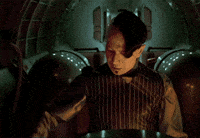

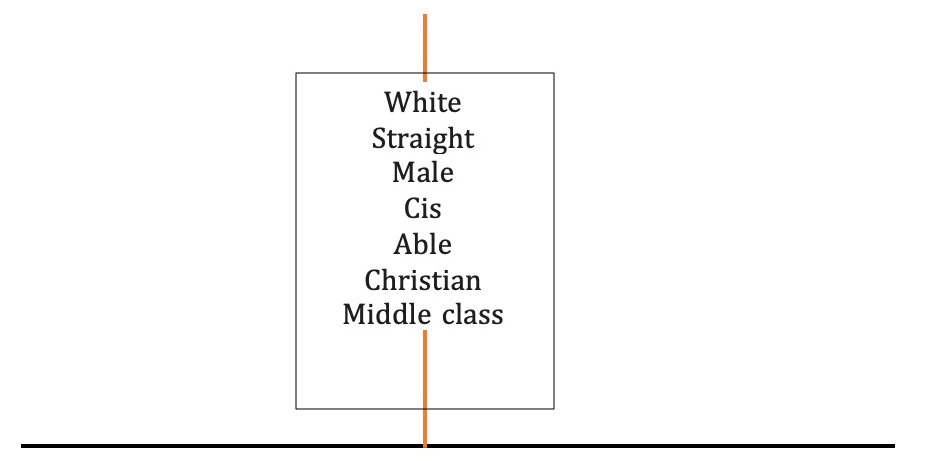




 Jerry Craft won all the things for his graphic novel New Kid (
Jerry Craft won all the things for his graphic novel New Kid ( I can’t say enough positive things about this book. The story is a simple one – Black kid leaves his local school for a predominantly White, hugely privileged and pretty damn racist private school. He has to find his way, find his people, and learn how to navigate the physical space, the kids, and the teachers. The one thing he is never in doubt about is his own identity. I read New Kid a few months ago and loved it. Craft hits a balance between showing us a Black 12 year old and his world, and providing a greater commentary on race, class, expectations, exceptionalism and the ways we see and don’t see ourselves and each other.
I can’t say enough positive things about this book. The story is a simple one – Black kid leaves his local school for a predominantly White, hugely privileged and pretty damn racist private school. He has to find his way, find his people, and learn how to navigate the physical space, the kids, and the teachers. The one thing he is never in doubt about is his own identity. I read New Kid a few months ago and loved it. Craft hits a balance between showing us a Black 12 year old and his world, and providing a greater commentary on race, class, expectations, exceptionalism and the ways we see and don’t see ourselves and each other.
![Artwork] Tai Pham (Green Lantern: Legacy) pinup (by Andie Tong ...](https://booktoss.files.wordpress.com/2020/08/image.jpeg?w=181)
 Full disclosure. I have met Laurie Halse Anderson a handful of times in professional settings and we follow each other on Twitter. I have never shared a meal, so she is not a friend, but I also would’t ignore her if I saw her at an airport. So, a professional acquaintance.
Full disclosure. I have met Laurie Halse Anderson a handful of times in professional settings and we follow each other on Twitter. I have never shared a meal, so she is not a friend, but I also would’t ignore her if I saw her at an airport. So, a professional acquaintance. 
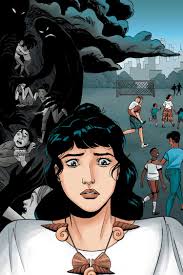

 June in Pride Month and I’m a long-time Latinx lesbian and we’ve got some history to cover. I’ve been out for the majority of my life. I’m out to friends, family, acquaintances, neighbors, colleagues, students, my sons’ friends and families, the checkout people at the grocery store, all the contractors I try and get to come back to the house to actually do the work that we’d like to pay them for, and our dog. I’m even out to the Subaru dealership guys – although that not a shock to anyone.
June in Pride Month and I’m a long-time Latinx lesbian and we’ve got some history to cover. I’ve been out for the majority of my life. I’m out to friends, family, acquaintances, neighbors, colleagues, students, my sons’ friends and families, the checkout people at the grocery store, all the contractors I try and get to come back to the house to actually do the work that we’d like to pay them for, and our dog. I’m even out to the Subaru dealership guys – although that not a shock to anyone. The LGBTQIA community has a lot to learn and repair. I was hoping some of that education and repair work would be seen in Stonewall: A Building. An Uprising. A Revolution by Rob Sanders and Jamey Christoph (Random House, 2019).
The LGBTQIA community has a lot to learn and repair. I was hoping some of that education and repair work would be seen in Stonewall: A Building. An Uprising. A Revolution by Rob Sanders and Jamey Christoph (Random House, 2019).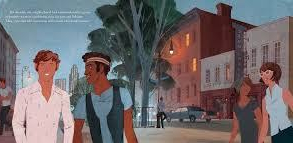
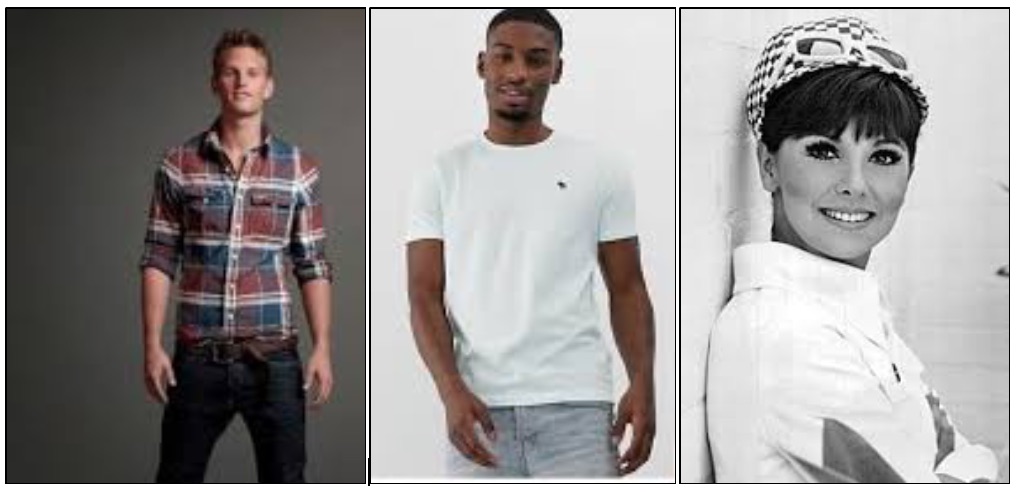

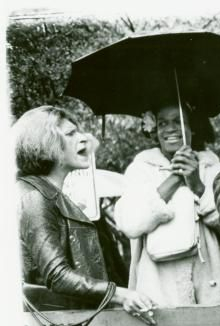
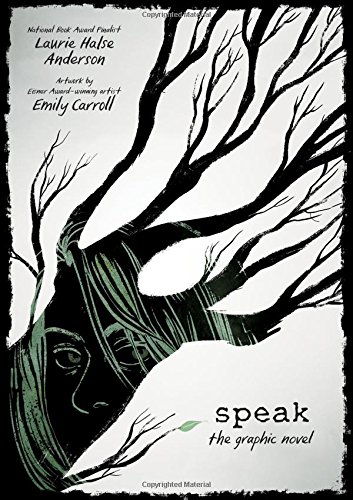










 Indigo looked at the objectification of yet another “brown femme” body and felt danger there. Do I think that is what the author meant? No. But, it is more important to listen to what Indigo saw and felt as she read. I’d love to ask Indigo about the way she was reading this image – what gave her the creeps? Was it the heavy lidded eyes, so often associated with “bedroom eyes”? The fact that Julián is nearly naked in his tighty whities? Maybe the blush on his cheeks? When I start reading, seriously reading this image with this and some of the other commentary Indigo put out on Twitter, I began to get an inkling. I suspect the issue is the intimacy we, as outsiders, read and bear witness to seeing Julián build his gender representation from the world of his grandmother’s house.
Indigo looked at the objectification of yet another “brown femme” body and felt danger there. Do I think that is what the author meant? No. But, it is more important to listen to what Indigo saw and felt as she read. I’d love to ask Indigo about the way she was reading this image – what gave her the creeps? Was it the heavy lidded eyes, so often associated with “bedroom eyes”? The fact that Julián is nearly naked in his tighty whities? Maybe the blush on his cheeks? When I start reading, seriously reading this image with this and some of the other commentary Indigo put out on Twitter, I began to get an inkling. I suspect the issue is the intimacy we, as outsiders, read and bear witness to seeing Julián build his gender representation from the world of his grandmother’s house.
 All of this was done silently and without consent. (There is also some really weird lesbian fetishizing but
All of this was done silently and without consent. (There is also some really weird lesbian fetishizing but 
An author’s response
Rob Sanders replied using the comment option :
As the author of the first picture book on the subject of the Stonewall Uprising, I was careful not to tell any one story from the Uprising–and there are as many stories as there are people who were present, each true and authentic. Rather, I chose to tell the story of the buildings that came to be known as the Stonewall Inn so children for the first time ever could hear and read about the history of the Uprising. The book was vetted by eight diverse members of the LGBTQ community. The illustrations of the book show a cross-section of the LGBTQ community who were present at the Stonewall Inn and who took place in the Uprising. The back matter is careful to point out with words and photos that trans women of color had an important role in the Uprising. One book never can represent all the aspects of a historic event, nor can one author. It was my sincere hope when I wrote this book and today that this is the first of many books on the subject of the Stonewall Uprising and that people who can tell the stories of individuals who were present at the Uprising will tell those stories with their strong, authentic voices.